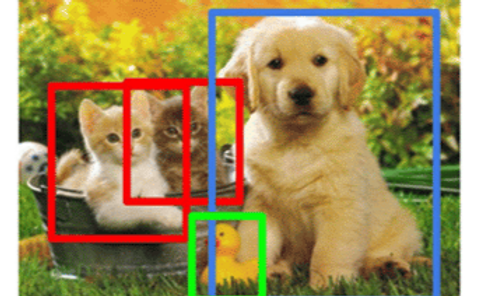
Object Detection
Object detection is a computer vision task that involves identifying and locating objects of interest within an image or video frame. Unlike image classification, which assigns a label to an entire image, object detection aims to recognize and delineate individual objects within the image, providing information about their locations and, often, their bounding boxes.
Applications of Object Detection
Autonomous Vehicles
-
Identifying pedestrians, other vehicles, and obstacles in the surroundings.
Surveillance and Security
-
Detecting and tracking objects or persons of interest in video footage.
Retail
-
Monitoring and analyzing customer behavior, tracking inventory, and enhancing security.
Medical Imaging
-
Identifying and localizing abnormalities or specific structures in medical scans.
Augmented Reality
-
Recognizing and interacting with real-world objects in augmented reality applications.
Key Concepts of Object Detection
Localization
-
Determining the spatial coordinates of objects within the image. This is typically represented by a bounding box, which is a rectangle specifying the object's position.
Classification
-
Assigning a class label to each detected object, indicating the category or type of the object (e.g., person, car, dog).
Object Detection - Popular Architectures
Region-Based CNNs (R-CNN)
-
This family of models proposes regions of interest in the image and then classifies and refines them.
Single Shot MultiBox Detector (SSD)
-
A single-pass object detection model that predicts multiple bounding boxes and class scores for each region.
Faster R-CNN
-
An extension of R-CNN that introduces a Region Proposal Network (RPN) for generating region proposals, making the process more efficient.
YOLO (You Only Look Once)
-
A real-time object detection system that divides an image into a grid and predicts bounding boxes and class probabilities directly.
Summary
Object detection plays a crucial role in advancing various fields by enabling machines to perceive and understand the visual world, making it a fundamental task in computer vision and artificial intelligence.
